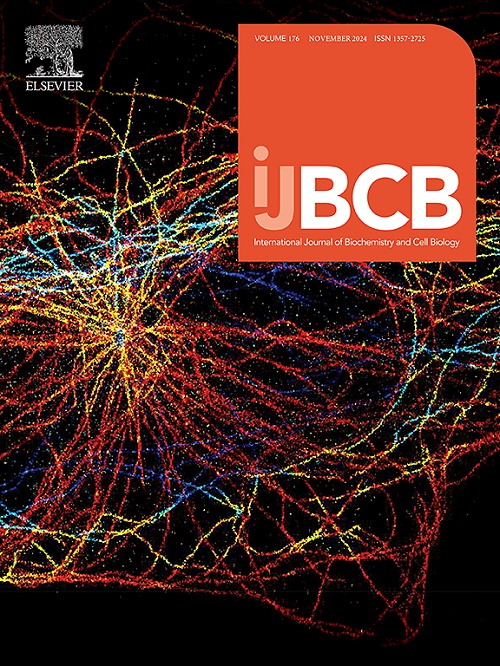SIRT2抑制可减弱肾上皮细胞自噬介导的纤毛形成过程中肌成纤维细胞的转变。
IF 2.8
3区 生物学
Q2 BIOCHEMISTRY & MOLECULAR BIOLOGY
International Journal of Biochemistry & Cell Biology
Pub Date : 2025-02-21
DOI:10.1016/j.biocel.2025.106754
引用次数: 0
摘要
肌成纤维细胞转化在纤维化疾病和伤口愈合中起着至关重要的作用。虽然SIRT2调节纤维化,但其作用机制仍然知之甚少。本研究旨在探讨静息状态下SIRT2抑制对人肾细胞肌成纤维细胞转化的影响。HK-2肾近端小管上皮细胞缺乏血清,导致初级纤毛的形成。转化生长因子-β (TGF-β)刺激可减少纤毛细胞数量和纤毛长度。纤毛缺陷是由于自噬终止失败,导致纤毛发生的负调节因子OFD1在向心卫星处积累。这种现象与纤维化相关蛋白的上调有关。为了阐明SIRT2在自噬-纤毛发生-纤维化轴中的作用,我们用一种特异性的SIRT2抑制剂AGK2处理细胞。AGK2处理促进了自噬体和自溶体的形成,促进了OFD1在中心粒卫星处的降解,导致初级纤毛延长。AGK2对原毛的修复与肌成纤维细胞转化的抑制有关。综上所述,SIRT2抑制通过促进自噬介导的纤毛生成来减弱TGF-β诱导的纤维化。这项研究强调SIRT2是纤维化疾病的潜在治疗靶点。本文章由计算机程序翻译,如有差异,请以英文原文为准。
SIRT2 inhibition attenuates myofibroblast transition through autophagy-mediated ciliogenesis in renal epithelial cells
Myofibroblast transition plays a crucial role in both fibrotic diseases and wound healing. Although SIRT2 regulates fibrosis, its mechanisms of action remain poorly understood. This study aimed to investigate the effects of SIRT2 inhibition on myofibroblast transition in human renal cells under quiescent conditions. HK-2 kidney proximal tubular epithelial cells were starved of serum, resulting in the formation of primary cilia. Transforming growth factor-β (TGF-β) stimulation reduced both the number of ciliated cells and ciliary length. The ciliary defects resulted from a failure in autophagy termination, leading to the accumulation of OFD1, a negative regulator of ciliogenesis, at centriolar satellites. This phenomenon was correlated with the upregulation of fibrosis-related proteins. To elucidate the role of SIRT2 in the autophagy−ciliogenesis−fibrosis axis, cells were treated with AGK2, a specific inhibitor of SIRT2. AGK2 treatment promoted the formation of both autophagosomes and autolysosomes and facilitated OFD1 degradation at the centriolar satellites, resulting in the lengthening of primary cilia. Restoration of primary cilia by AGK2 was associated with the suppression of myofibroblast transition. In conclusion, SIRT2 inhibition attenuates TGF-β-induced fibrosis by promoting autophagy-mediated ciliogenesis. This study highlights SIRT2 as a potential therapeutic target for fibrotic diseases.
求助全文
通过发布文献求助,成功后即可免费获取论文全文。
去求助
来源期刊
CiteScore
8.10
自引率
0.00%
发文量
124
审稿时长
19 days
期刊介绍:
IJBCB publishes original research articles, invited reviews and in-focus articles in all areas of cell and molecular biology and biomedical research.
Topics of interest include, but are not limited to:
-Mechanistic studies of cells, cell organelles, sub-cellular molecular pathways and metabolism
-Novel insights into disease pathogenesis
-Nanotechnology with implication to biological and medical processes
-Genomics and bioinformatics

 求助内容:
求助内容: 应助结果提醒方式:
应助结果提醒方式:


